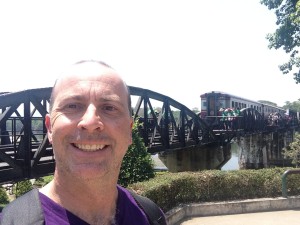 Kanchanaburi juxtaposes two things. On the surface, it is a lovely relaxed riverside town in the west of Thailand which attracts tourists from all over Thailand and the world drawn to the natural beauty of the surrounding area. But the other drawcard is that the town is also the haunting centre of one of the most horrific projects of World War Two, the infamous Death Railway built from the River Kwai across Thailand and into Burma. 160,00o Asian forced labourers and Allied POWs worked on the bridge. Between 90,000 and 120,000 died during its construction in 1943. We may never know how many died. The story was immortalised in the film: Bridge on the River Kwai (albeit with some historical inaccuracies):
Kanchanaburi juxtaposes two things. On the surface, it is a lovely relaxed riverside town in the west of Thailand which attracts tourists from all over Thailand and the world drawn to the natural beauty of the surrounding area. But the other drawcard is that the town is also the haunting centre of one of the most horrific projects of World War Two, the infamous Death Railway built from the River Kwai across Thailand and into Burma. 160,00o Asian forced labourers and Allied POWs worked on the bridge. Between 90,000 and 120,000 died during its construction in 1943. We may never know how many died. The story was immortalised in the film: Bridge on the River Kwai (albeit with some historical inaccuracies):
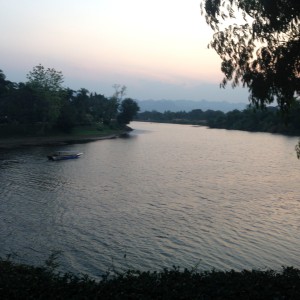
Location and Orientation
Kanchanaburi is located on the northern side of the Mae Klong River which is formed from the convergence of the Kwai Noi and Kwai Yai Rivers. So technically, the bridge does not cross the Ribver Kwai at all.
Kanchanaburi, itself is pleasant Thai rural town. There is not a lot of stunning architecture in the town apart from the lovely railway stations! The town has two commercial districts:
- a regular downtown with office buildings, retail outlets and shopping malls. The main road, Saeng Chuto Road, runs north to the south through the town.
- a riverfront area with tourist businesses and market stalls along River Kwai Road. Mae Nam Kwae Road runs closer to the pretty river and has many guesthouses, coffee shops and bars on it
There are a series of small streets running off the main roads named after the countries which had soldiers imprisoned in the region during World War Two: Australia Rd, New Zealand Alley, England Rd, America Rd, Lao Rd etc. It is another aspect of the town that is both moving and sobering.
Down New Zealand Alley, is the Saphan Mae Nam Kwai, that famous bridge across the River. Most of the bridge is original but two of the spans were reconstructed in a different style following the Allied bombing of the bridge in World War Two.
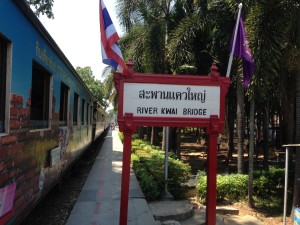
From the bridge, three trains a day run along what is left of the Death Railway to a town called Nam Tok. It is sobering to ride through the beautiful countryside on tracks that caused the deaths of so many men.
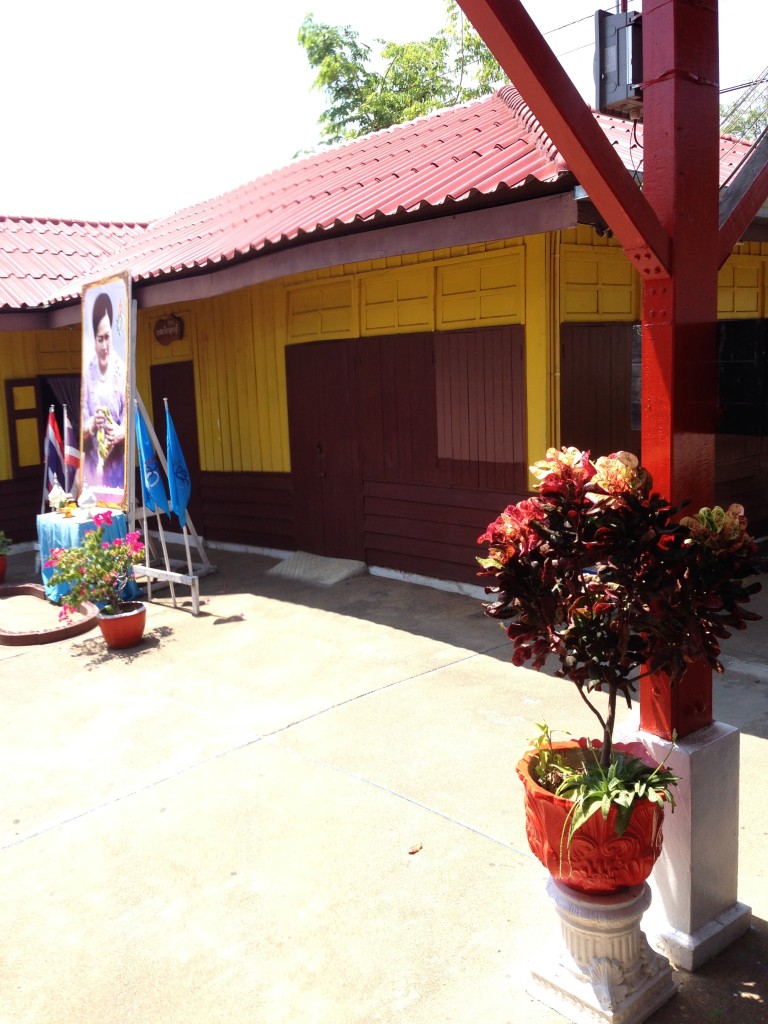
Climate and Weather
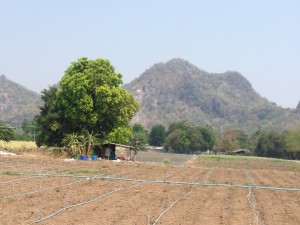
Kanchanaburi is a really warm place! The average top temperature through the year is 34.2°C (93.6°F) with the “coldest” month being December – top temperature of 31.3°C (88.3°F). Temperatures rise until April, which is very hot with the average daily maximum at 38.2 °C (100.8 °F). Winters are dry and very warm. The monsoon season runs from May through October, with heavy rain and somewhat cooler temperatures during the day, although nights remain warm.
Costs
A good three-star hotel starts at around $US37, four-star $US56 and five star $US85. Hostels should cost $US7 to $US10 for a bed. Budget $10 to $15 per person per day for food depending on your taste and budget.
Crime and Safety
Road accidents, like in most parts of Thailand are high. The main cause of death for tourists in Thailand is road accidents with a 1 in 735,294 chance of a tourist being killed in a road crash. Wear seat belts and motorcycle helmets.
Water-borne and food-borne infectious diseases are very prevalent with outbreaks occurring from time to time. I filter my drinking water using a Brita water filter as I aim to avoid buying bottled water.
Thailand’s homicide rate sits around 3 per 100,000, slightly higher than most UK cities but not as high as most US states. Exercise awareness and avoid getting involved in dangerous activities. I try to be aware of my circumstances and do not flash money or jewellery around. Like everywhere else in Thailand, illegal drug use carries with it very significant penalties.
The Travel & Tourism Competitiveness Report 2017 rated Thailand as the 34th safest country in the world.
Doing and Eating
- River Kwai Bridge Walk-As a train nerd, I loved this but it won’t work if you are frightened of heights! There is plenty of warning when a train comes through and you can either leave the bridge or step onto one of the ledges. It should not be taken lightly, however, as people have been injured or died on the bridge through exertion or carelessness. Be aware of your circumstances and where and when the trains are coming. We were stunned to see one oblivious tourist happily snapping away whilst frantic train staff screamed at him to move out of the way. The trains do run slowly which means there is little chance of too many incidents. At night, there is a small light display that re-enacts the wartime bombing of the bridge.
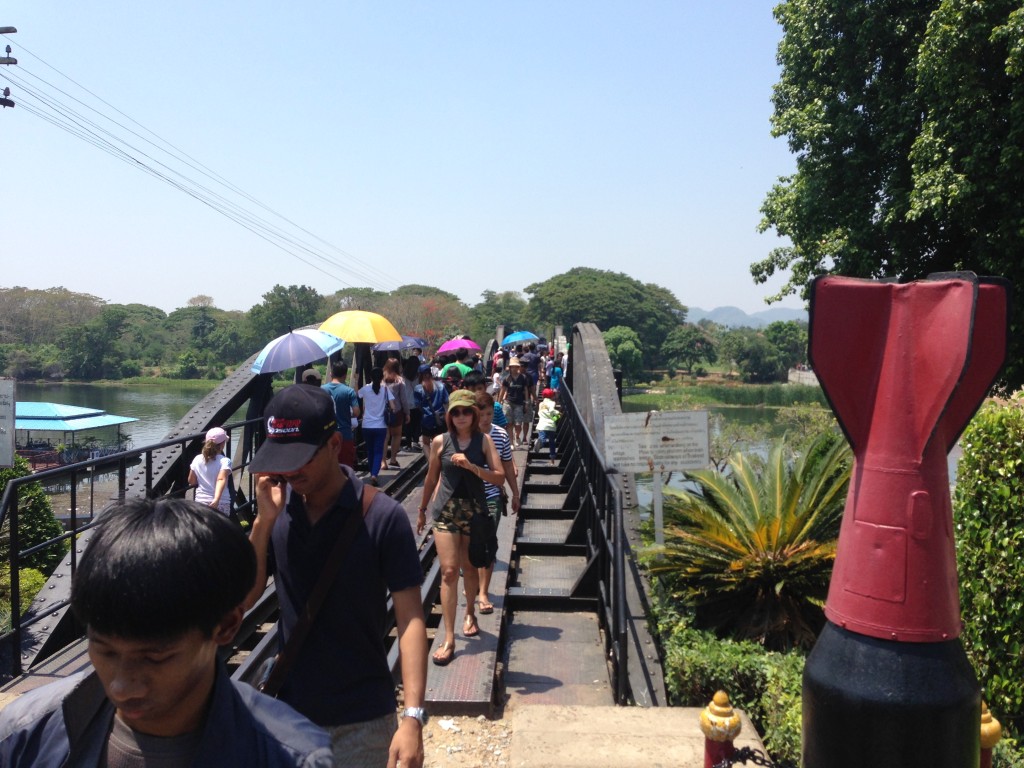
- Hellfire Pass Museum is an excellent war memorial funded by the Australian government. It really is a memorial with an emphasis on respectful silence. Tonnes of useful information, though. I found this part of it; a “Peace vessel” facing the valley particularlulalruy touching
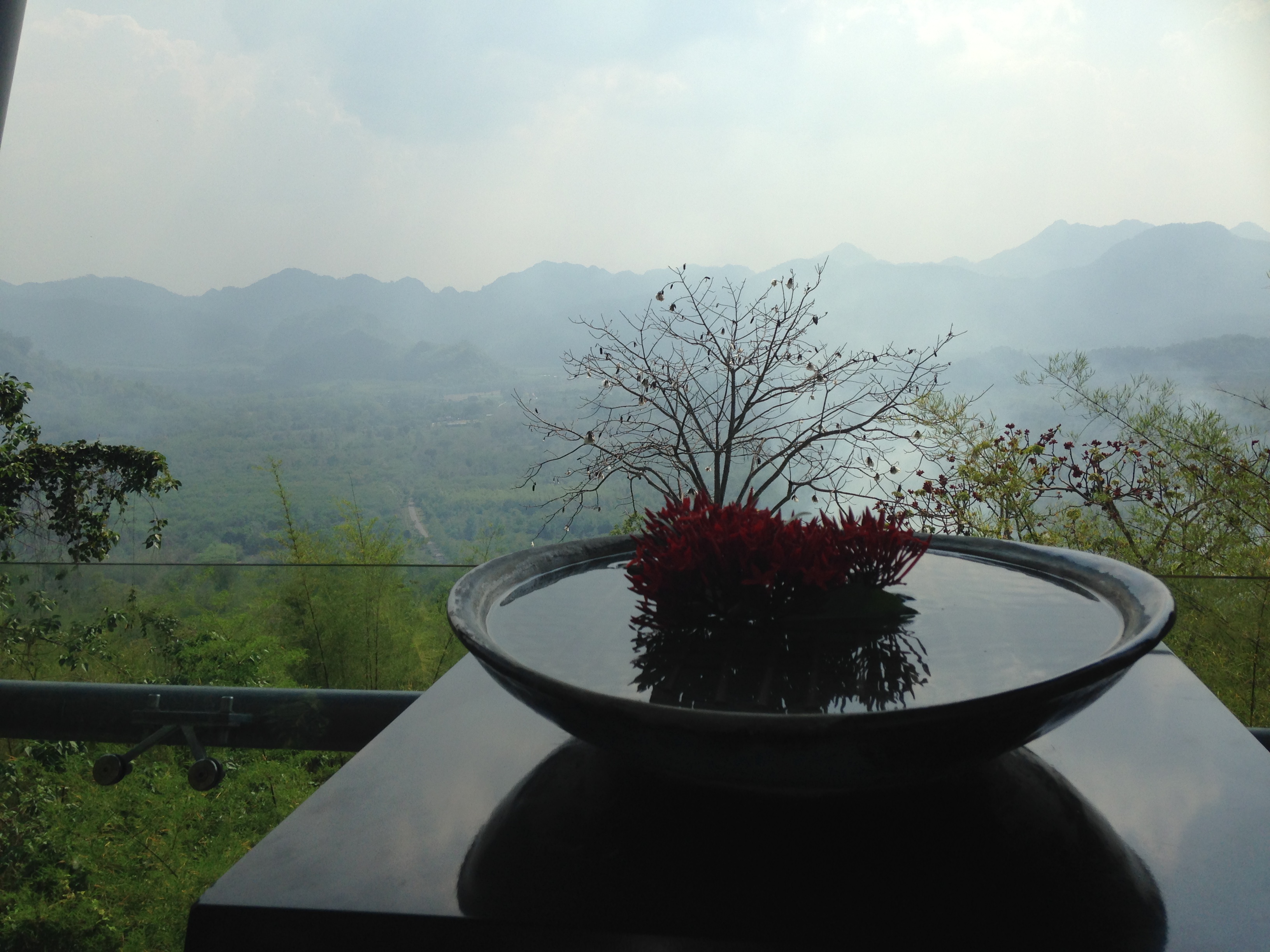
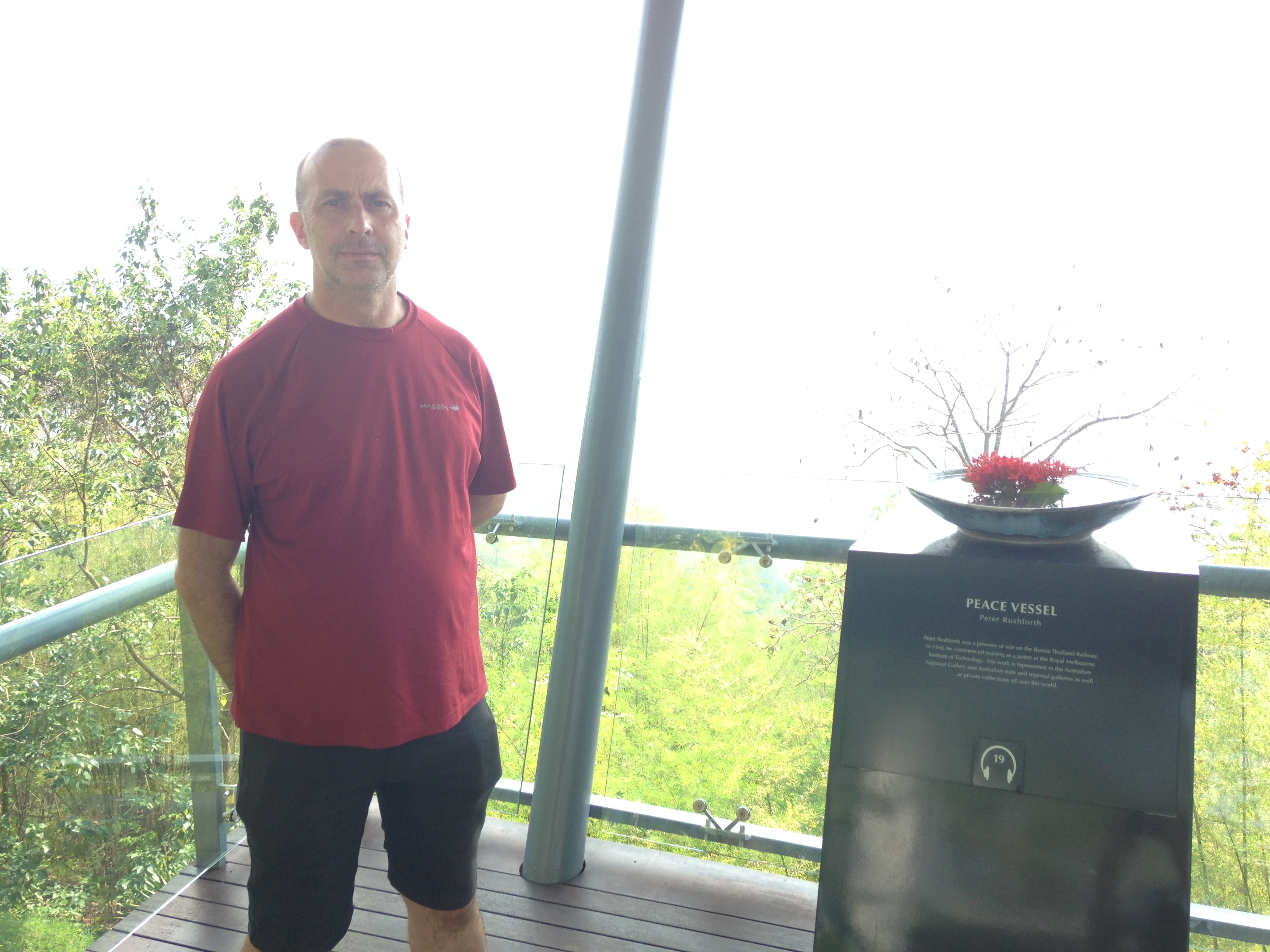
- Hellfire Pass – the spot where the POWs and Asian labourers cut through rock by hand is a very moving experience. On 25th April every year, an Anzac Day Dawn Service is held here to remember those who fell here. Very moving.
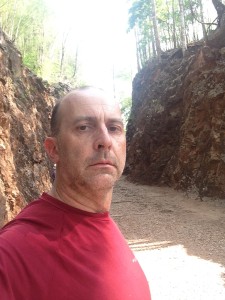
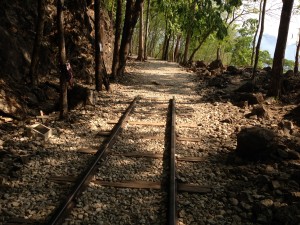
- The Death Railway Museum Centre next to Kanchanaburi War Cemetery provided a fascinating background to World War Two events in the area.
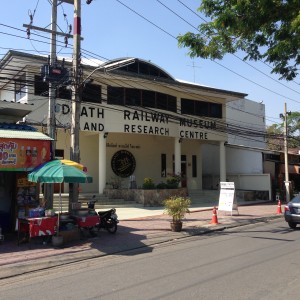
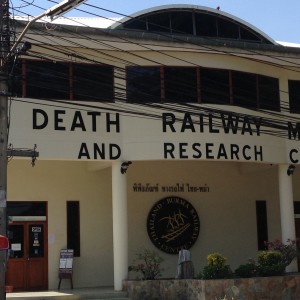
- Tham Krasae Bridge is the longest railway bridge in Thailand. It was built in only 17 days during the WWII. Located 56km from Kanchanaburi, it is a stop on teh “Death Railway”. The views from the bridge are actually quite beautiful
- One must eat at the floating restaurant on the river! Mixed service, quite touristy but if you pick right, there is some great food
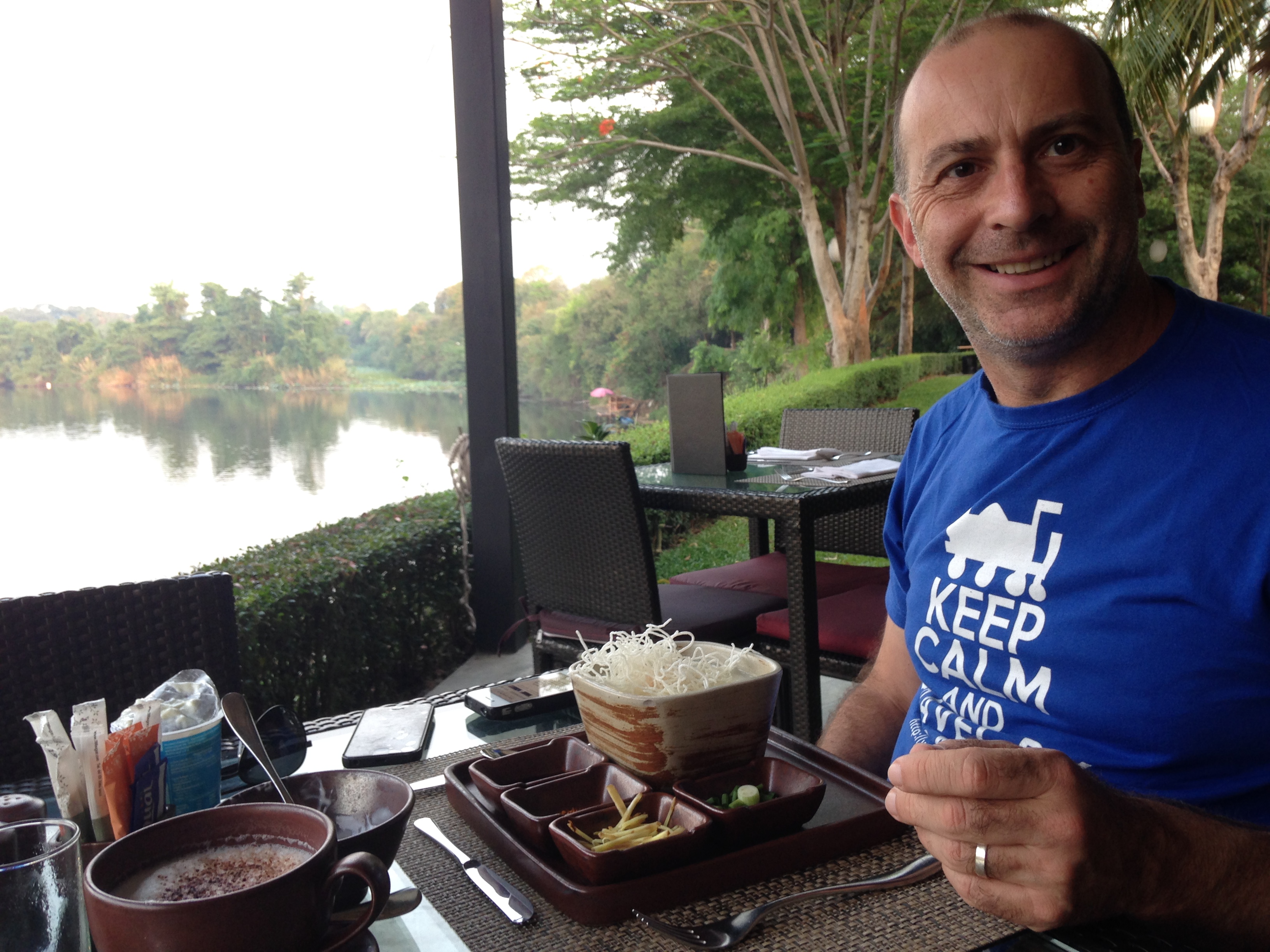
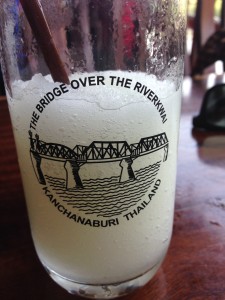
- Sai Yok Noi waterfall is a walk from the last station of the Death Railway. There is also a bus from Kanchanaburi but I would go for the train every time. Sai Yok Noi is a ten metre (32 ft) cascade with the water flowing straight into the Kwae Noi river (which then flows back to Kanchanaburi). Being the dry season, water flow was slowed but it is still a very popular place amongst the locals and plenty of Thai families were splashing around in the waters.
- Erawan Falls, 65km from the city, consists of seven stunning cascades. Be warned, I think all of the six million people who visit the area annually end up here! Head up as quickly as you can because the higher cascades tend to be less busy. NB the highest two cascades require serious hiking!
- The Commonwealth war Cemetary in Kanchanaburi is the very well maintained last resting place of 7000 Prisoners of War who died in the construction of the Death Railway. After the war, the bodies were moved from resting spots along the railway to this cemetery. Walking through and reading the gravestones reminds one of the evils of war.
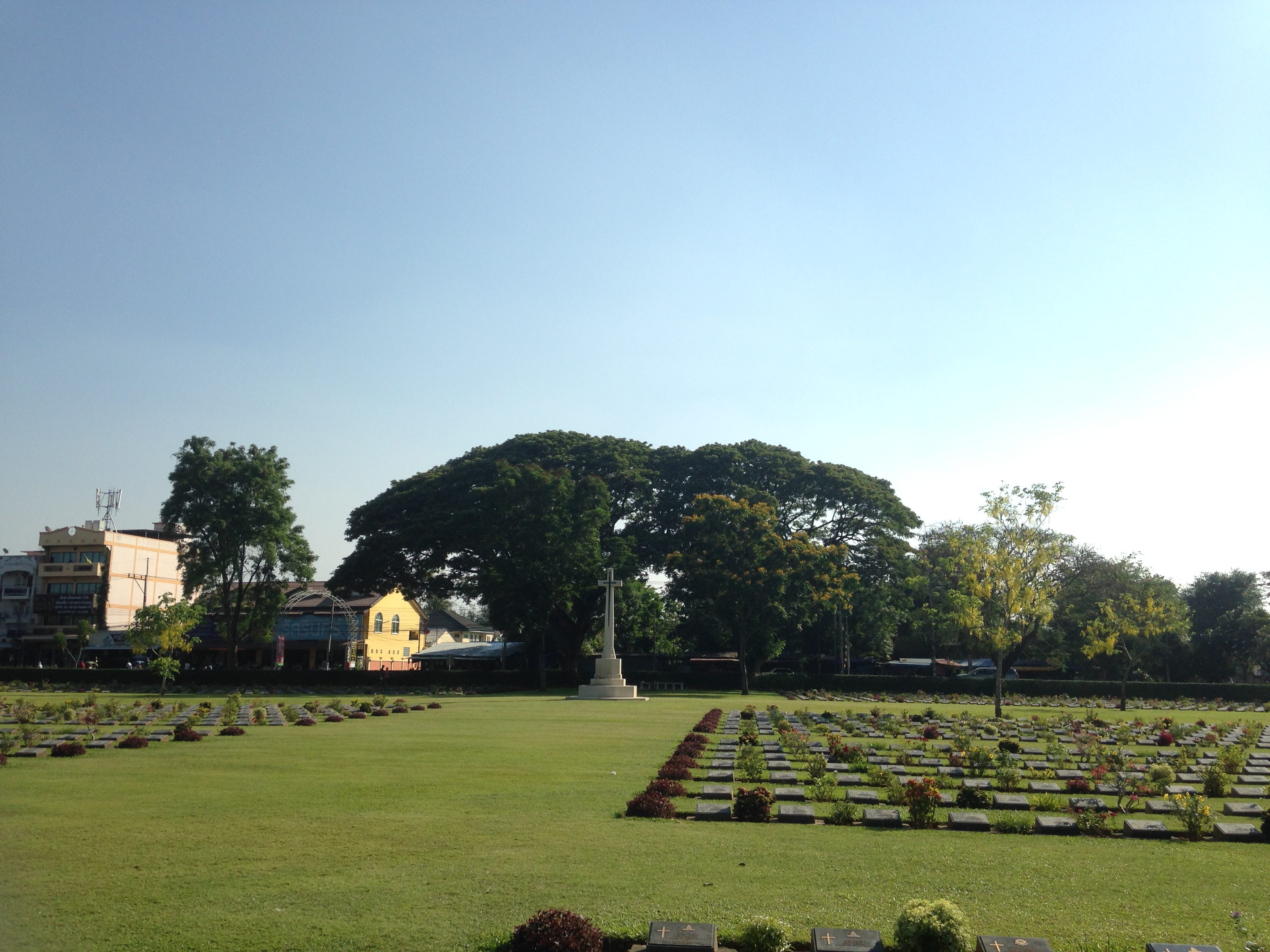
- JJ Night Market-this smallish market near the station was a good place to try some local food at very reasonable prices.
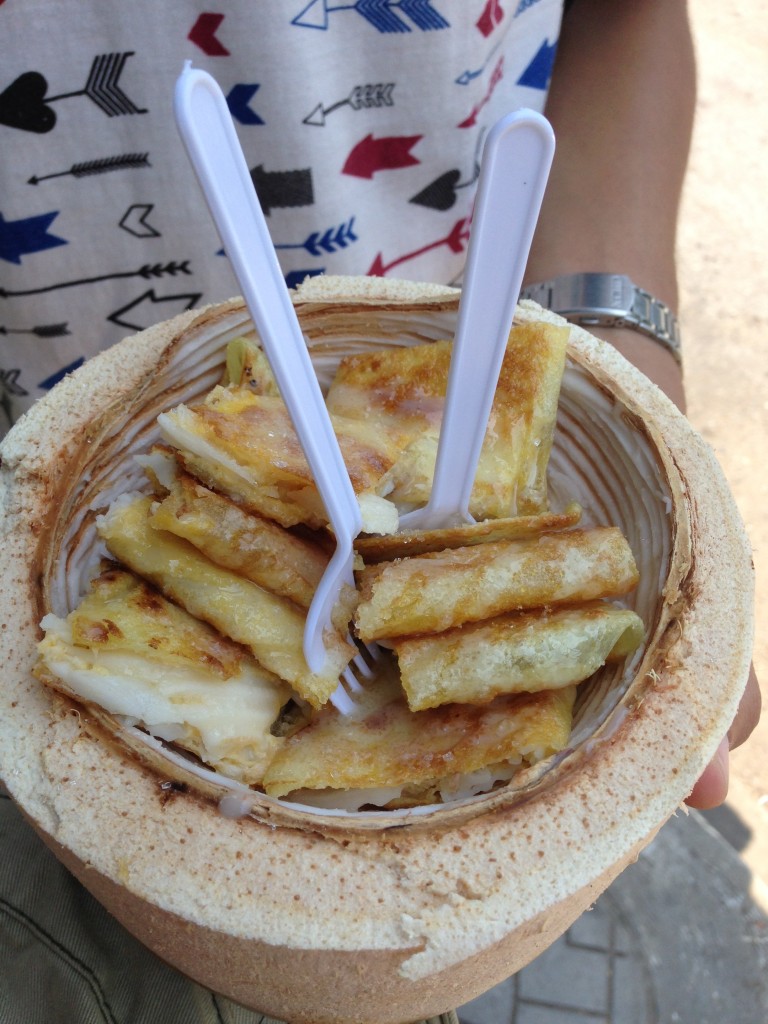
There are a lot of other food options in the town.
Getting there and around
There are many organised tours from Bangkok with varying prices. Some tourists hire vans or drivers for the day to take them to, from and around Kanchuburi. I recommend staying longer than one day.
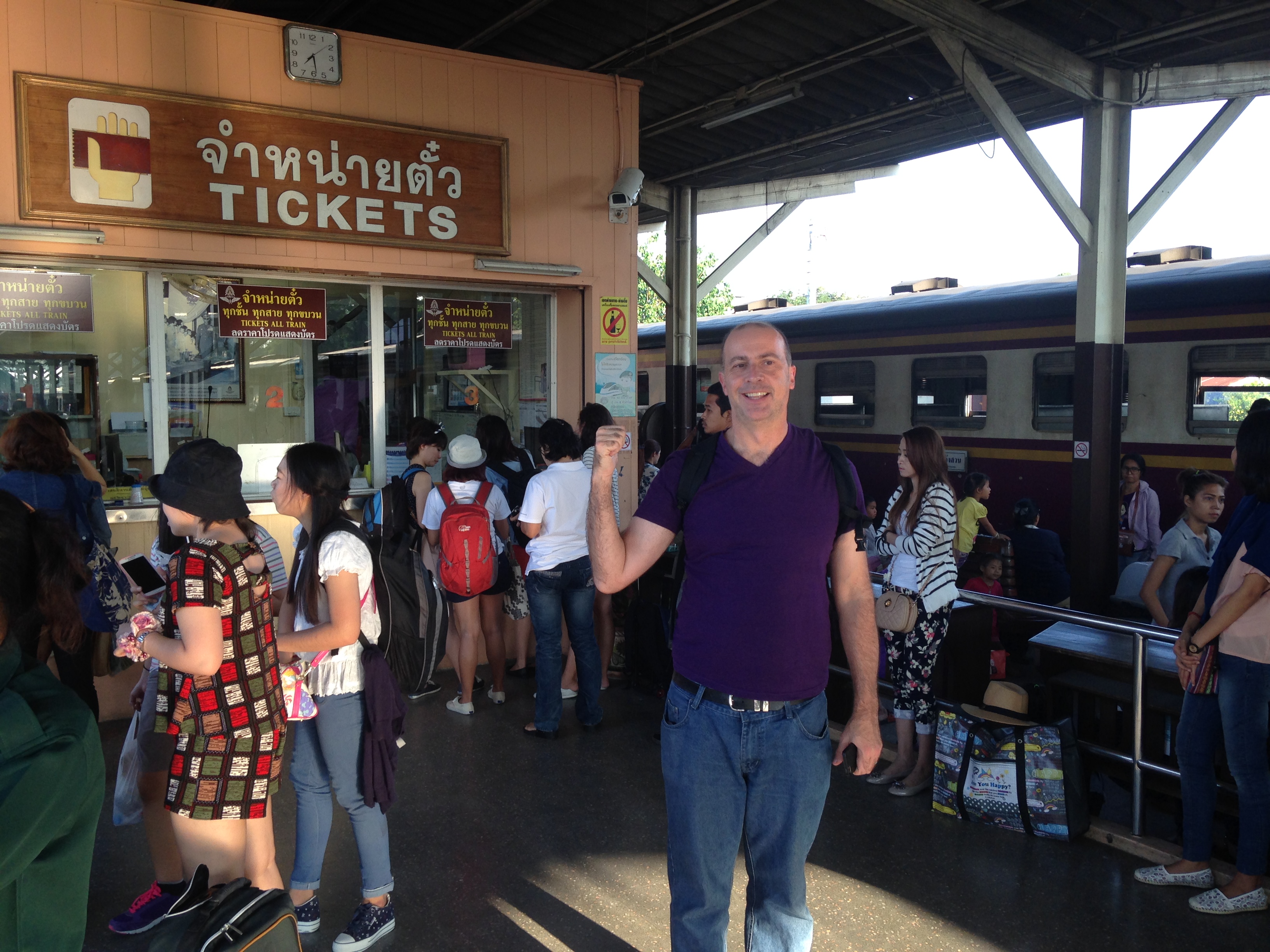
Independent travel is very easy. I took the train from Bangkok’s Thonburi Train Station (pictured above). There are three services a day from there taking around 2.5 hours for the journey. Trains stop at Kanchanaburi downtown station before proceeding to the River Kwai and then onto the Death Railway itself. Food and drink vendors hop on and off the train selling their wares and there are great opportunities to interact with Thais. Fare is 100 baht (around $US3) for a seat in a third class non air conditioned train.
There is also a special tourist train on weekends which is air conditioned and includes a drink. This train is entirely made up of farangs (foreigners).
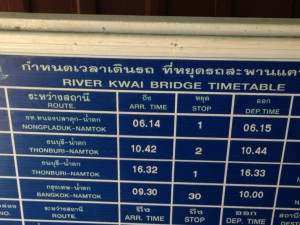
There is a regular intercity bus service from Bangkok’s Sai Tai Kao, Southern Terminal throughout the day taking between 2.5 and three hours. There are also less frequent buses from the Northern Bus Terminal (Mo Chit). This service takes about three hours to Kanchanaburi bus station.
There is a mini bus service from Hua Hin to Kanchanaburi or you can catch the train from the South of Thailand to Nakhon Pathom and change to the train to Kanchanaburi. Do not build in a tight connection. My experience is that Thai trains are almost always very late.
Getting around Kanchanaburi is not so easy. We walked a fair bit of it but the town is very spread out and the climate not conducive to walking! Pick up trucks with seats on the back tray called Songthaews drive up and down Saeng Chuto Road. There are also motorbike taxis and tuk-tuks which have a semi-fixed price schedule (ie some price negotiation may be needed).
Vibe:
Combine very sombre war memorials with stunning nature.
The Verdict:
I have been to close to 200 cities with a population over 100,000. I rank Kanchanaburi at 159th place with a score of 62%. It is well worth a visit for more than a day/ The climate is hard work and transport could be improved. Take the time to absorb both the awful history and the stunning nature.
Related Posts
- Trip Report: Rail Comfort to Chiang Mai
- Snug & Comfy Thai Sleeper train to HuaHin
- Bucket List Check: 900mi By Train from Kuala Lumpur to Bangkok
- Chilling in Chiang Mai
- My Top 40 cities


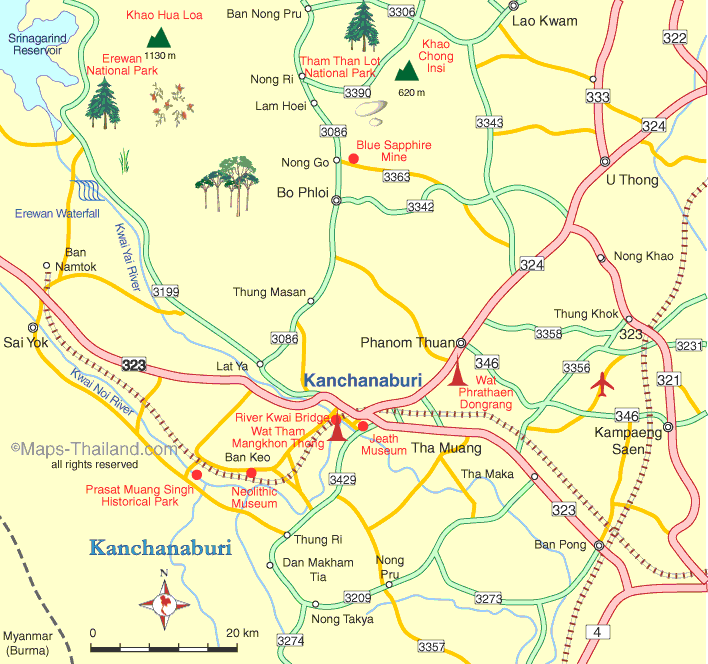
Leave a Reply